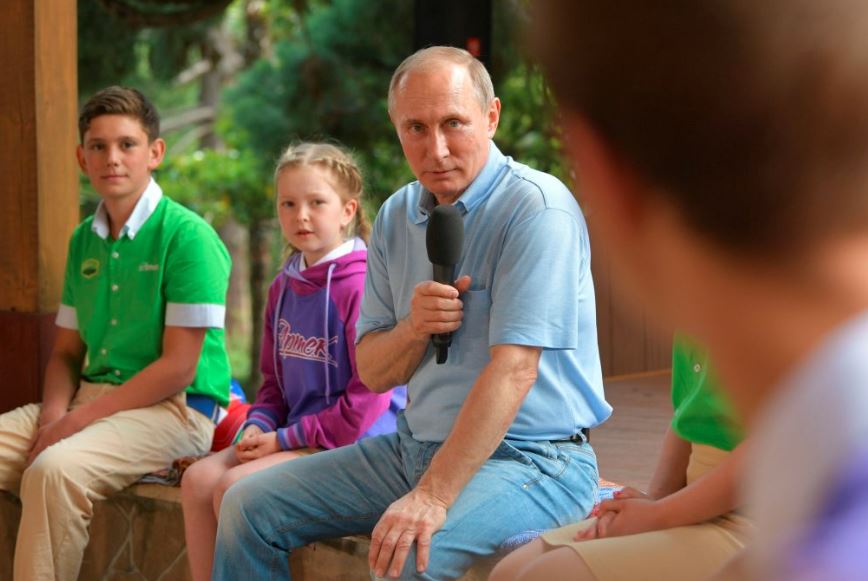
300,000 Young People in Cossack Education
300,000 Young People in Cossack Education
With the coming of the new academic year in Russia, the Cossack movement celebrated its achievements in enrolling so many young people in their education institutions; “300,000 young Cossacks” are now being educated in such institutions. This number offers support both for the success of the regime’s ideological indoctrination and the contention that Russia’s Cossack societies are becoming increasingly consequential domestic actors in their own right (see EDM, August 10).
This claim came after representatives of the All-Russian Cossack Society (VSKO), led by Ataman Nikolai Doluda, visited various Cossack educational institutions. Doluda stopped by the Eisk Cossacks of Krasnodar Krai, where he praised the “well-organized educational process.” He told the teachers, “You educate children in the spirit of the Cossack tradition so that the Motherland will not be ashamed of them. … From the walls of the cadet corps come real patriots who are ready to come to the aid of people and the country! I am grateful to their parents for the choice of school for these children. In a single Cossack family, the kids will become loyal sons of the Fatherland” (Vsko.ru, September 2).
Indeed, Cossack youth are being increasingly called upon to supply Russian troops. While some tentative comparisons have been made to the Hitler Youth (see EDM, August 10), the 2 percent of the Russian youth population who are Cossack is much smaller than the 65 percent of German children who had joined the Hitlerjugend by 1936 (Kater, Hitler Youth, 2004). However, the Cossack movement still has ample space for growth, and it may not yet be at its height.
The practice of building up paramilitary cadet corps is not limited to those with an ostensible connection to the Cossacks; there are numerous non-Cossack cadets groups as well. Russia-watcher Marlene Laruelle argued that, in fact, the growth of the Russian far-right is founded in the country’s “militia culture,” including youth organizations (The Washington Quarterly, July 14). As the war against Ukraine continues, and Russia looks set for a confrontational relationship with its neighbors and the collective West, young Cossacks have become a tool of war for Russian President Vladimir Putin.
The Kremlin uses competitions among the Cossack corps throughout Russia to incentivize excellence. This year, the All-Russian Spartakiad of Pre-Conscription Cossack Youth was won by the Kropotkin Cossack Corps from Krasnodar territory. The contest appears to consist of a “‘military-sports’ game, ‘Cossack Spolokh’ … ‘Cossack Triathalon,’ the intellectual game ‘Historical Quest,’ a Cossack campfire contest, chess and football. In the Spartakaid [Soviet-era national sporting competition] of pre-conscription Cossack youth, the teams participated in orienteering, kettlebell sports, tug-of-war, shooting pneumatic weapons, mock grenade throwing, drill training and horseback riding.”
The second and third places in the “Cossack Spolokh” competition were taken by teams from Khanty-Mansiysk and Yaroslavl, respectively, demonstrating the national scope of the Cossack movement. The winning team was addressed by Doluda and VSKO First Deputy Minister of Education Alexander Bugaev (Vsko.ru, October 15). The appearance of both these personalities at the event further stresses the case for the intertwining of the Russian state with ostensibly civic and volunteer Cossack movements. It is also revealing that the games are oriented toward “pre-conscription” youth, making the militaristic overtones of the movement clearly visible.
A number of signs point to the Russian regime becoming more dependent on the Cossacks, especially their youth movements. Doluda told an all-Russian youth meeting in Kaliningrad that the location “was not lightly chosen as the venue for this rally. Our Western neighbors—the Poles and Baltic republics—should see and know: it is here that Russian Cossacks set the vector for their historical future, gather their youth leaders into a single fist! It is here, in the westernmost lands of the Russian Federation … that a reliable, powerful Baltic Cossack district has been created and is operating.”
The North-Western Cossack Voiska will contain structures of the Pskov, Murmansk and Karelia regions, among others. Yet Doluda’s true aim—of encouraging the young to risk their lives for pointless imperial expansion—was revealed when he said “only 15-18 percent of Cossacks age 18 to 35 take part in the special military operation, with the exception of the Kuban detachment that includes 30 percent of young Cossacks. This is what we need to talk about at today’s forum. Listen to the leaders of the Cossack youth movement in the regions: what have they done to prepare young Cossacks for mobilization” (Vsko.ru, October 14). The speech naturally contained an ample dose of anti-American propaganda and some tortured reasoning that the eighth package of sanctions from the West will in fact aid the development of the Russian economy.
In all, it seems that the importance of Cossack social structures in the Russian polity continues to grow. Not only has the new North-Western Cossack Voiska been inaugurated, but the regime is ever more explicitly reliant on the Cossacks for mobilization and for ensuring the preparedness of newly mobilized recruits for active combat. As the regime continues to carry out its war against Ukraine, then, one should not be surprised to see the further growth of the Cossack movement inside Russia.


